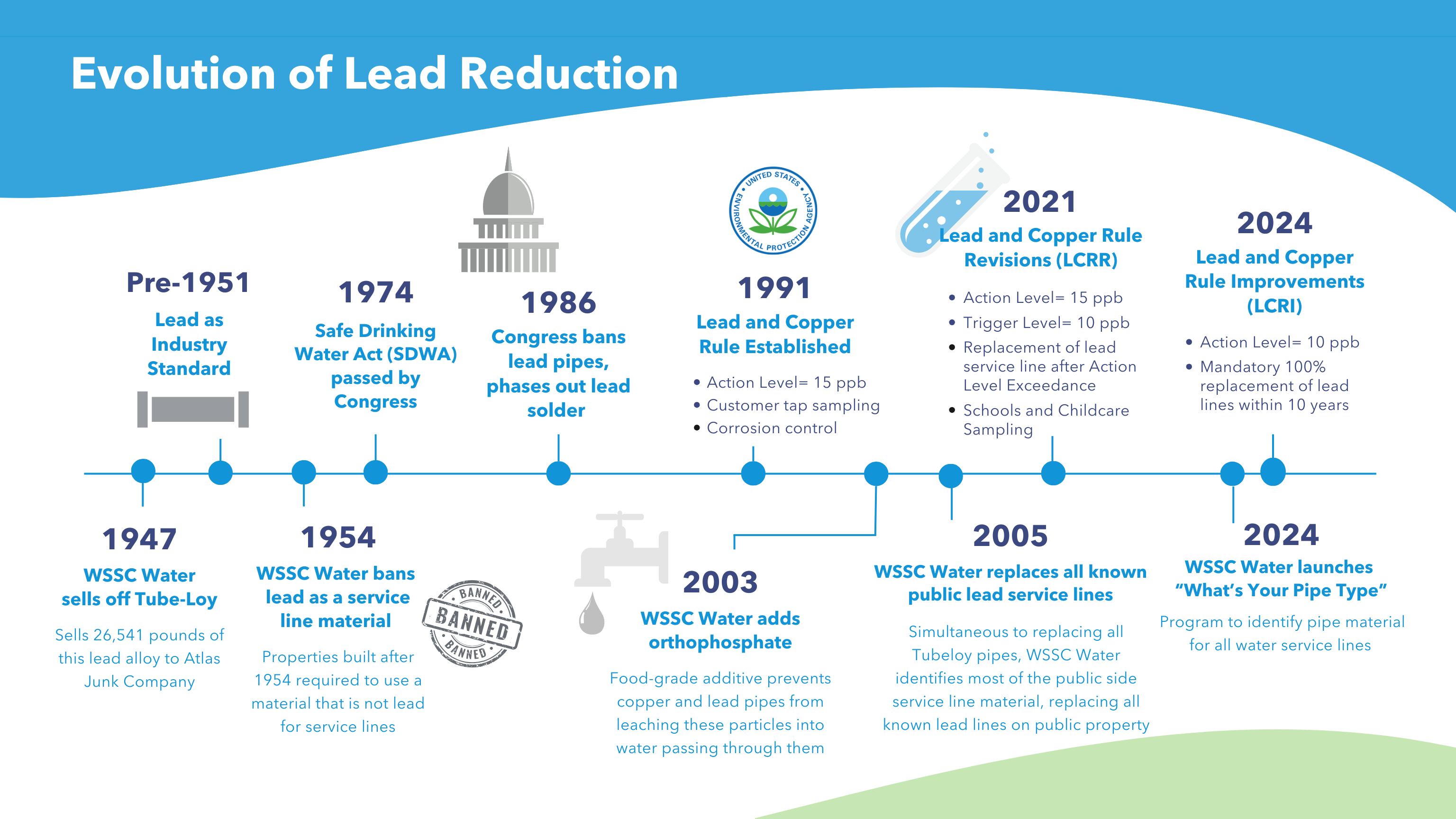History of Lead in Drinking Water
A timeline of WSSC Water’s and national efforts to eliminate lead in drinking water
A timeline of WSSC Water’s and national efforts to eliminate lead in drinking water

In 1954, WSSC Water prohibited the use of lead in service lines, mandating non-lead materials for properties constructed thereafter. The Safe Drinking Water Act was enacted by Congress in 1974, which banned lead pipes nationally and phased out lead solder by 1986.
The U.S. Environmental Protection Agency (EPA) issued the Lead and Copper Rule in 1991 to manage lead and copper in drinking water, setting action levels at 15 ppb, requiring customer tap sampling, and implementing corrosion control measures.
WSSC Water introduced orthophosphate in 2003, a food-grade substance that inhibits the leaching of particles from copper and lead pipes into the water. By 2005, WSSC Water had conducted an extensive records review and replaced all utility-side lead lines we found.
The EPA finalized the Lead and Copper Rule Revisions in 2021, with a compliance deadline starting October 16, 2024. This regulation mandates water systems perform an initial service line inventory, notification by U.S. mail for customers with known or suspected lead service lines, a Tier I public notification template to be used for lead action level exceedances with updated action levels at 10 ppb, and reporting obligations.
The Maryland Department of the Environment (MDE) regulates most public water systems in Maryland. WSSC Water reports EPA compliance activities to MDE.
In response to the EPA rule revision, WSSC Water initiated the "What's Your Pipe Type" program in 2024 to determine the material composition of water service lines. This is the first step to eliminating all lead service lines.
If you have any questions, please contact us at PipeType@wsscwater.com.